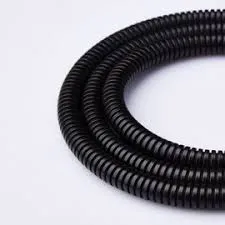Understanding the Functionality and Benefits of Drag Conveyors in Material Handling Systems
Drag Conveyors An Overview of Their Importance in Material Handling
Drag conveyors are essential machinery in various industries for transporting bulk materials. Their unique design offers several advantages over traditional conveyor systems, making them a preferred choice in sectors such as mining, agriculture, and manufacturing. This article explores the functionality, benefits, and applications of drag conveyors.
What is a Drag Conveyor?
A drag conveyor, also known as a drag chain conveyor, is a type of bulk material handling equipment. It consists of a series of dragging devices or flights attached to a chain that moves along a trough or housing. The material is pulled along the conveyor by the dragging flights, which are designed to minimize spillage and keep the materials contained. Unlike belt conveyors, drag conveyors operate on a horizontal, inclined, or vertical plane, allowing for versatile installation and layout configurations.
Key Features and Benefits
One of the primary benefits of drag conveyors is their high efficiency in handling various materials, including grain, coal, and aggregates
. They can transport heavier loads compared to belt conveyors, making them ideal for industries that require robust material handling solutions. Additionally, drag conveyors can operate in confined spaces, which helps maximize facility layouts while ensuring smooth operations.Another notable feature is their low maintenance needs. Drag conveyors are built for durability and often have fewer moving parts than traditional conveyors, lowering the risk of breakdowns. This aspect translates into reduced downtime and maintenance costs, enhancing overall productivity.
drag conveyor

Furthermore, drag conveyors have the ability to operate with a high degree of precision. This characteristic is particularly advantageous in applications where accurate dosing of materials is essential. Their design allows for continuous and steady movements of materials, preventing overloading and ensuring consistent flow rates.
Applications in Various Industries
Drag conveyors are widely used across a range of industries. In agriculture, they play a crucial role in transporting grain and feed from one location to another. They are also common in the mining sector, where they are used to move ores and minerals efficiently. Additionally, drag conveyors are valuable in the food industry for handling granular materials, ensuring hygiene and safety standards are met during transportation.
In manufacturing, these conveyors are used to transport finished products or raw materials between different process stages, promoting enhanced productivity and workflow. Their versatility allows for customization, making them suitable for specific applications.
Conclusion
In conclusion, drag conveyors are vital components in modern material handling systems. Their robust design, efficiency, and low maintenance needs make them indispensable across various industries. As industries continue to evolve and demand higher productivity, the significance of drag conveyors will likely increase, reinforcing their role in optimizing material transport and handling processes. Understanding their features and applications can help businesses make informed decisions when investing in bulk material handling solutions, ultimately improving operational efficiency and productivity.








